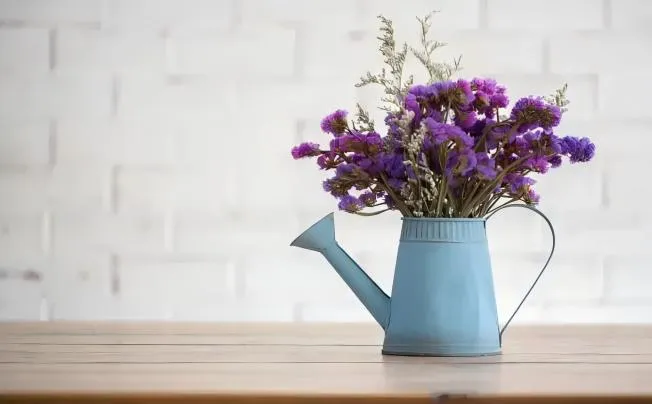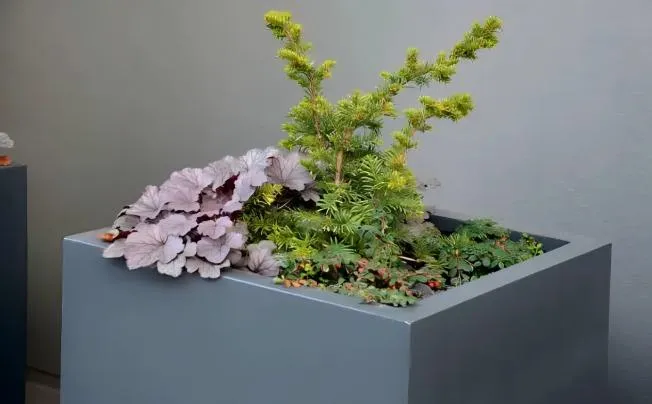How To Waterproof A Metal Flower Pot?
In the world of flower cultivation, metal flower pots are popular for their unique texture and modern feel. However, if they are not waterproofed, metal flower pots will face many problems in the process of flower cultivation, so waterproofing is particularly important.
Why waterproof metal flower pots?
Prevent metal from rusting and extend its service life
When metal comes into contact with air and water, its properties cause an oxidation reaction that makes it prone to rusting. Rust will be created when the water in the flower pot seeps into the metal surface and combines with the ambient oxygen. Rust will erode the metal's structural strength in addition to detracting from the flower pot's aesthetic appeal by leaving its surface rough and mottled. The flower pot will become damaged and unusable as a result of the corroded parts slowly corroding and perforating over time. Effective waterproofing techniques can prevent water from coming into direct contact with metal, significantly slow down the rate of rust, and increase the flower pot's lifespan.
Create a healthy growth environment for plant roots
As the "mouths" of plants, the roots must take up water and nutrients from the soil in order to continue growing. The soil will remain excessively humid for a long time and the air permeability will deteriorate if the metal flower pot is not waterproof because the extra water cannot be released in a timely manner and will collect at the bottom. Long-term exposure to such conditions can cause the roots of the plant to rot, which impairs the plant's ability to absorb nutrients and causes poor development, leaf yellowing and withering, etc. Waterproof metal flower pots may ensure that the soil's moisture level may sustain plant growth without holding water, creating a dry, breathable, and healthy growing environment for plant roots that encourages plant success when paired with an efficient drainage system.

Waterproofing steps full analysis
1. Get ready by cleaning the surface
The metal flower pot's surface needs to be carefully cleaned before being waterproofed. The surface of metal flower pots may become polluted with dust, oil, rust, and other contaminants during manufacturing, shipping, and storage. These contaminants will lessen the waterproof effect and interfere with the waterproof coating's ability to stick to the metal surface. It has to be cleaned as a result.
You can use a specific metal cleaner to clean the oil by spraying it on the metal flower pot's surface and then gently wiping it off with a sponge or clean, soft cloth until all of the oil has been removed. If the oil is hard to get rid of, leave the cleaner on the surface for a long time to completely dissolve it before wiping. In the absence of a professional metal cleaner, you may alternatively wipe it off with a solution of warm water and detergent, which can also be used to remove oil.
Dust removal is quite easy. To remove dust from the metal flower pot's surface, use a fresh soft brush or a hair dryer's cold air setting. Make sure there is no dust residue by thoroughly cleaning the flower container, paying close attention to all of its crevices and corners.
The metal flower container must first be rust-removed if its surface is rusted. Sandpaper can be used to gently polish off light rust, but a rust remover is required for more severe rust. After applying the rust remover to the rusted area and waiting the amount of time indicated by the product's instructions, rinse it with clean water and use a soft towel to wipe it dry. In order to keep the metal from rusting again, waterproofing should be done as soon as feasible after rust removal.
2. Primer: Use primer
Similar to glue, primer improves the waterproof effect and longevity of the metal surface by helping the subsequent waterproof coating stick to it better. If you decide to apply primer, start by selecting the appropriate primer based on the metal flower pot's material and usage circumstances. Epoxy primer, which has high adhesion and anti-rust qualities, is often a good choice for common metal flower pots.
Make sure the components are equally distributed by giving the primer a good stir before applying it. Next, uniformly apply the primer to the metal flower pot's surface using a brush or spray gun. To prevent missing or uneven thickness, be mindful of uniform thickness when applying. In general, it is preferable to keep the primer's thickness between 0.1 and 0.2 mm. In order to ensure that the primer is sprayed evenly across the flower pot's surface, make sure to adjust the spray gun's pressure and distance.
Follow the directions on the product if you're using a metal pre-treatment agent. Apply the pre-treatment chemical to the metal flower pot's surface using a fresh cloth or brush after giving it a good shake. The metal surface will undergo a chemical reaction with the pre-treatment to create a protective layer that improves the adherence of later coatings. Wait for the pre-treatment to thoroughly dry after application; this often takes one to two hours, depending on the product's recommendations.

3. Waterproof coating construction
Apply waterproof paint
Select a waterproof paint that is appropriate for the job. To prevent precipitation, evenly swirl the waterproof paint before applying. Next, evenly apply the waterproof paint to the metal flower pot's surface using a brush or roller. When applying, use even force to prevent dripping, brushing errors, etc. Usually, two to three layers are needed, and before applying a new coat, the preceding layer must completely dry. Applying the first layer vertically will cover the flower pot's surface equally; applying the second layer horizontally will create a cross with the first layer, increasing the coating's density and homogeneity. Each waterproof paint layer's thickness is regulated to be between 0.2 and 0.3 mm, with the overall thickness typically falling between 0.5 and 1 mm.
Apply waterproof paint
If using waterproof paint, mix it first as directed by the product's instructions, then swirl it thoroughly. The waterproof paint should next be applied evenly and completely to the metal flower pot's base surface using a brush or roller. Additionally, it is usually required to apply two to three times, with each application being no thicker than 1 mm. Once the previous treatment has dried a little, apply the subsequent one. Usually, it is not sticky for one to two hours at a period. Before and after, apply the application in a straight cross form to make sure that every area can be completely covered. The application's overall thickness is typically 1-2 mm.
Apply a sealant
Sealants must be applied to areas that are prone to leaking, such as the joints of metal flower pots and the margins of drainage holes. Squeeze the sealant evenly at the seams or the borders of the drainage holes after loading it into the glue gun. To guarantee that the space is fully filled, the extruded sealant should create a continuous line. Next, push the sealant flat with your fingers or other tools until it presses firmly against the metal surface. When applying the sealant, take care to prevent it from getting into the flower container and interfering with the plant's growth.
4. Curing and drying
Do not utilise the metal flower pot right away after the waterproof coating creation is finished. You still have to wait for the waterproof coating to completely cure and dry at this point.
The drying and curing times and climatic conditions needed for various waterproof paints, varnishes, and sealants vary. Generally speaking, waterproof paints and coatings take 1-2 hours to dry on the surface and 24-48 hours to dry completely in a well-ventilated, room temperature (about 25°C) atmosphere. Sealants typically take 24-72 hours to cure.
The product manual's time requirements should be followed in real-world operations, though.
The metal flower pot should be shielded from outside impacts, water splashing, etc., and the humidity and temperature should be suitable throughout the drying and curing process. The drying and curing time will be prolonged, and the waterproof effect may even be impacted, if the surrounding temperature is too low or the humidity is too high.

Selected Blogs
-
What customization services are available for metalworking customization?
2024-12-12
-
What Is The Difference Between A Plant Container And A Raised Bed?
2024-04-23
-
Garden Screening & Fence Panels
2024-04-23
-
Gardening pot selection tips
2024-04-17
-
The function and collocation of horticultural fire pot
2024-04-17


